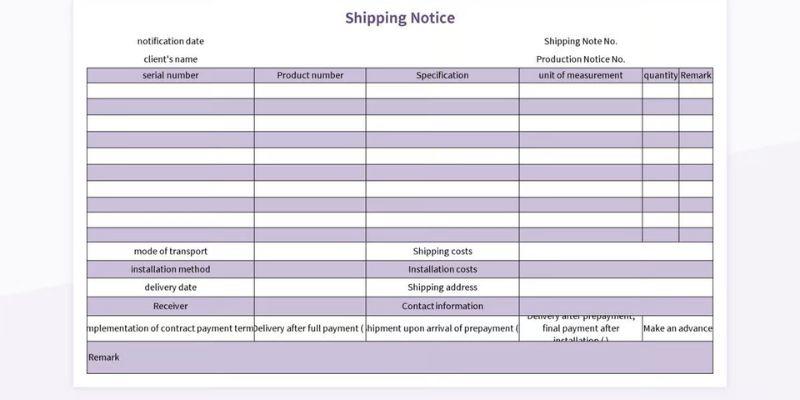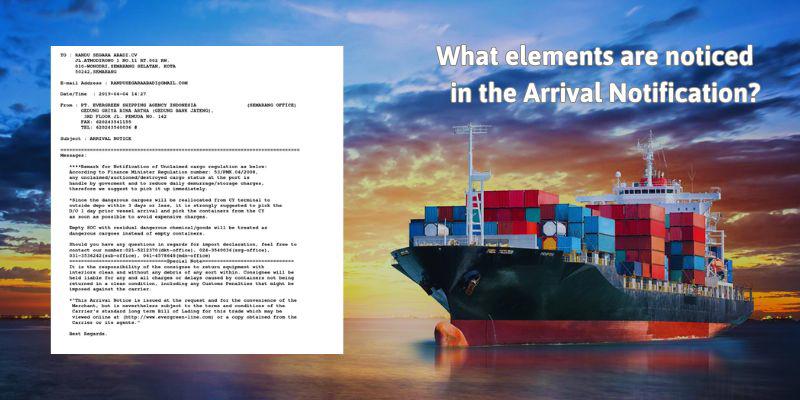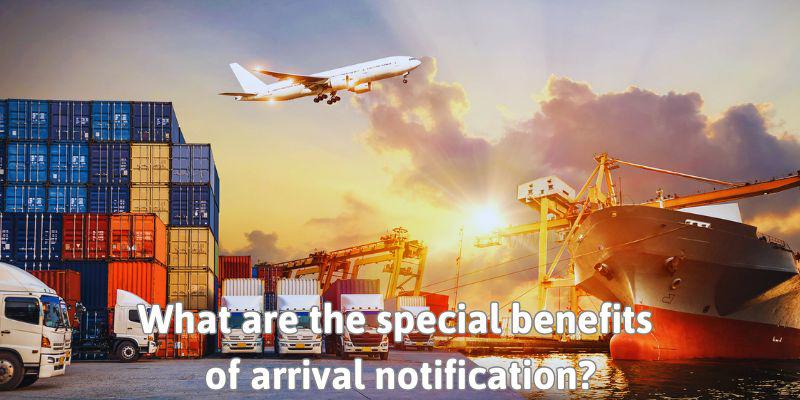
Starting June 1st, 2023 Our warehouse fee will be $0.65/cubic foot per month
In effort to lower the warehouse storage fee during inflation, we have went narrow aisle racking.This construction took us four months but the project is finally completed. With narrow aisle racking, we are able to drop storage by 24%.We as partners will go through this inflation together.
03/14/2024
In today's interconnected global marketplace, effective supply chain management is essential for businesses to thrive. A key component of this process is the Arrival Notice, which serves as a formal communication notifying the recipient of the impending arrival of a shipment. In this article, Worldcraft Logistics will help you learn the concept of Arrival Notification, its importance and the key role it plays in ensuring seamless deliveries.

An arrival notice serves as a communication tool issued by a carrier to inform pertinent parties about the anticipated arrival of a shipment at a designated destination. These parties encompass not only the shipper and receiver of goods but also extend to truckers, customs brokers, and other stakeholders engaged in the shipping process.
Although not obligatory, arrival notices are prevalent within the shipping industry, particularly in air and ocean freight. Their utility lies in facilitating preparation among involved parties and expediting the overall shipping procedure. While there exists no prescribed format or distribution method for these notices, their widespread usage underscores their effectiveness in streamlining logistics operations.
Related articles help you expand your source of new knowledge:
👉 Shipping documents: Essential and commonplace documents in import and export
👉 What Is Declared Value? Overview of Logistics Terminology
👉 What is the LIFO method? Definitions, specific examples and other useful information

An arrival notice serves as a crucial communication tool between carriers and consignees, providing essential details to ensure a smooth and efficient delivery process. While specifics may vary slightly depending on the carrier, the following comprehensive information is typically included:
👉 The Shipper's Details: This encompasses the name, address, and contact information of the entity or individual responsible for shipping the goods. It serves as a point of contact for any queries or concerns regarding the shipment.
👉 Consignee Information: Equally important is the identification of the buyer or consignee, including their name, address, and contact information. This enables seamless coordination for the delivery process.
👉 AWB, SWB, BoL Number: A unique identifier such as an Airway Bill, Seaway Bill, or Bill of Lading number is provided by the carrier. This facilitates tracking and tracing of the shipment throughout its journey.
👉 Flight/Vessel Details: Vital information about the mode of transportation, including the name of the vessel or aircraft, as well as the corresponding voyage or flight number, ensures accurate routing and scheduling.
👉 Container Number: A specific reference to the container housing the goods during transit enables efficient handling and tracking of the shipment.
👉 Cargo Details: A detailed description of the items being transported, along with corresponding quantities, allows for proper handling and verification upon receipt.
👉 Estimated Time of Arrival (ETA) and Actual Time of Arrival (ATA): Both projected and actual arrival times at the designated seaport or airport are provided, allowing consignees to plan and coordinate accordingly.
👉 Place of Delivery: Clear indication of the final destination, whether it be the airport, seaport, or a specified facility requested by the consignee, ensures timely and accurate delivery.
👉 Freight Charges and Terms: Transparency regarding the amount owed to the carrier for their services, as well as agreed-upon freight terms between the seller/shipper and the buyer/consignee, including payment arrangements, fosters trust and accountability in the transaction.
By encompassing these key components, an arrival notice not only fulfills its primary function of informing consignees about the imminent arrival of their shipment but also lays the groundwork for efficient logistics management and seamless delivery execution.

Arrival notifications play an important role in the logistics chain, bringing countless benefits to both shippers and consignees. Here are some key advantages:
Arrival notifications provide timely information about incoming goods, allowing consignees to efficiently plan for receipt, processing, and distribution of shipments.
Consignees can better plan inventory management, staffing, and operational processes when they receive advance notice of goods arrival. This helps optimize resources and reduce the risk of bottlenecks or delays in the supply chain.
By clearly detailing shipping details such as container number, cargo description and delivery instructions, arrival notices facilitate effective communication between the carrier, shipper and consignee. This clarity reduces the possibility of misunderstandings or errors during the delivery process.
The arrival notice often includes necessary information such as the AWB, SWB or BoL number, which is very important for the customs clearance process. Having this information in advance will help speed up customs clearance procedures, minimizing delays and potential storage costs.
Shipping rates and shipping terms provided in the arrival notification provide consignees with transparency regarding the costs associated with shipping and delivery. This allows for better financial planning and budgeting of shipping costs.
By specifying the terms of carriage of goods agreed upon between the parties, arrival notices ensure compliance with contractual obligations and hold both shippers and consignees accountable for their roles and responsibilities. their respective during transportation.
With accurate ETA and ATA information, consignees can allocate resources such as labor, equipment and storage space more effectively, ensuring that they are fully prepared to receive and process shipments. goods to.
Providing consignees with timely and detailed arrival notifications contributes to overall customer satisfaction. Consignees appreciate proactive communication and effective logistics, which can enhance their experience and loyalty to the shipping company or supplier.
In essence, arrival notifications serve as an important communication tool in the logistics ecosystem, facilitating the smooth and efficient movement of goods, while enhancing transparency and accountability. process and customer satisfaction throughout the shipping process.
No, an arrival notice and a bill of lading are distinct documents in the shipping process. A bill of lading serves as a contract between the shipper and carrier, outlining the terms and conditions of the shipment. Conversely, an arrival notice is a communication sent to the consignee, notifying them of the shipment's arrival at its destination.
An arrival notice can be transmitted through various channels, including email, fax, or postal mail, to the consignee or their appointed representative. It is essential to ensure that the notice contains pertinent details such as the arrival date, time, location, and any pertinent instructions for the consignee.
The abbreviation for arrival notice is commonly noted as "AN."
Typically, the carrier or shipping line is responsible for covering the expenses associated with sending the arrival notice to the consignee or their designated agent. However, these costs may be bundled into the overall shipping fees or separately invoiced to the consignee.
The responsibility for preparing and dispatching the arrival notice lies with the carrier or shipping line. They are accountable for ensuring that the notice contains accurate information regarding the shipment's arrival and pertinent instructions for the consignee.
An arrival notice should encompass crucial details related to the shipment's arrival, encompassing the date, time, and location of arrival, alongside any pertinent instructions for the consignee. Additionally, it may feature particulars such as the container or shipment number, carrier or shipping line name, and the consignee's contact information.
SEO
Digital Marketing/SEO Specialist
Simon Mang is an SEO and Digital Marketing expert at Wordcraft Logistics. With many years of experience in the field of digital marketing, he has shaped and built strategies to effectively promote Wordcraft Logistics' online presence. With a deep understanding of the logistics industry, I have shared more than 500 specialized articles on many different topics.

Education
01/05/2025

Education
02/18/2025

Education
01/01/2024

Education
08/28/2024

Education
11/13/2023